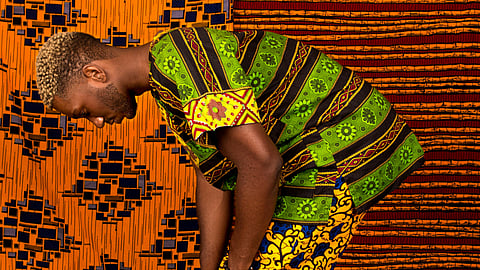
- LIFESTYLE
- FASHION
- FOOD
- ENTERTAINMENT
- EVENTS
- CULTURE
- VIDEOS
- WEB STORIES
- GALLERIES
- GADGETS
- CAR & BIKE
- SOCIETY
- TRAVEL
- NORTH EAST
- INDULGE CONNECT

Fashion is not just about colour and cut—print design plays a crucial role in how we perceive body shape, movement, and proportion. Through clever use of patterns and visual tricks, garments can create powerful optical illusions that enhance or alter appearance. This fusion of art and perception has been used by designers for centuries to influence how clothes interact with the human form.
Stripes are one of the most classic examples. Vertical stripes tend to elongate the body, making the wearer appear taller and slimmer. This is due to the brain interpreting the up-and-down motion of the lines as an extension of height. Conversely, horizontal stripes can sometimes make a figure appear broader—though this perception can vary depending on spacing, thickness, and colour contrast. Notably, some studies have challenged this assumption, showing that certain horizontal stripes can actually create a slimming effect if well-placed.
Strategic placement of prints can dramatically alter perception. Garments with darker side panels and lighter central sections can create the illusion of a narrower waist, a technique often used in bodycon dresses. Similarly, diagonal patterns can give the illusion of movement, guiding the eye across the body in a dynamic way. Chevron and zigzag prints add energy to a look and can either elongate or broaden, depending on their direction and width.
Large, bold prints tend to draw attention and can emphasise the part of the body where they are located, while smaller, repetitive patterns can blend into the background, offering a more subtle texture. Optical art-inspired prints, with gradients or warped grids, can create a 3D effect, making flat fabrics appear sculpted or contoured. These designs can enhance curves or suggest volume where there is none.
Cultural prints, like African wax patterns or Indian ikats, also play into optical illusions, not just through geometry but through vibrant contrasts and symbolic layering that attract and hold attention.
In essence, the psychology of prints allows clothing to become a form of visual storytelling—one that shapes perception just as much as fabric or tailoring.